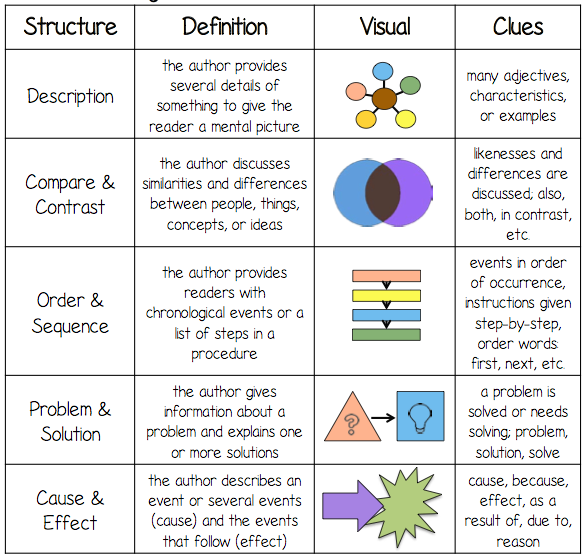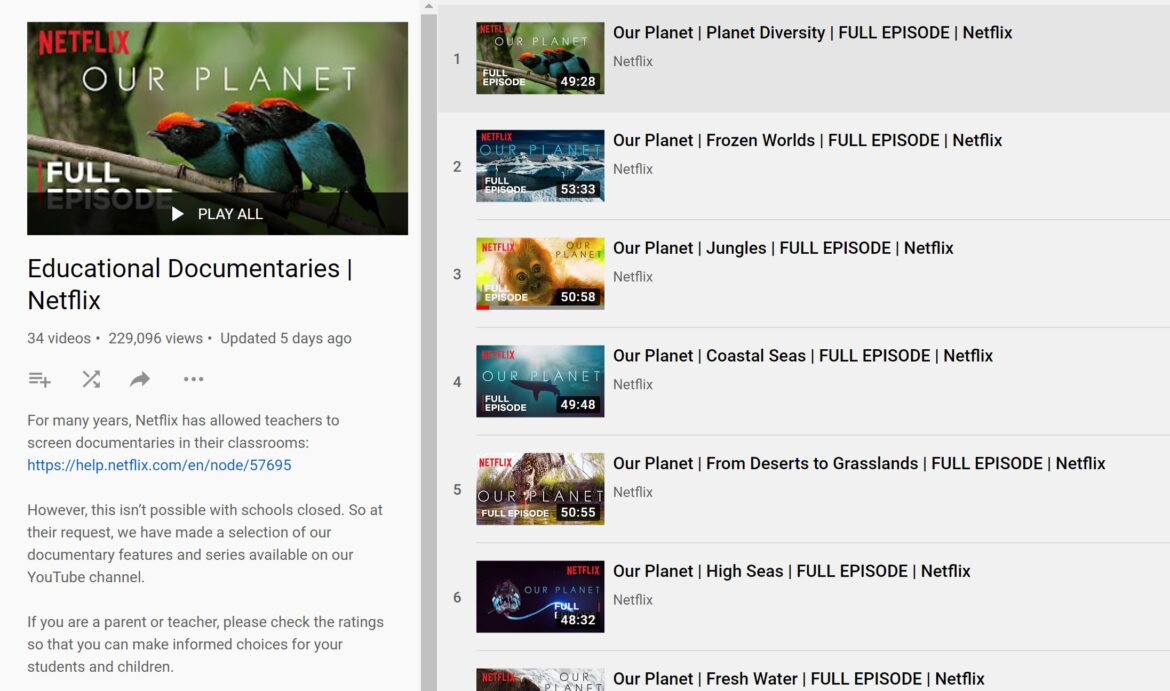If you need more nonfiction content for your remote learning classroom, several online providers of nonfiction have made resources available for K-12 education. In this blog entry, we’ll explore a few high-effect-size instructional strategies that can enhance the use of nonfiction media sources.
Did You Know?
More than 85% of the reading and writing we do as adults is nonfiction. But most of the reading and writing in K–3 classrooms is fiction or personal narrative. Students competent in reading fiction are often not competent in reading nonfiction. Seventy-three percent of students read nonfiction three levels below fiction. That’s at least three Reading Recovery levels below. Students who were competent readers of nonfiction were ALSO competent in reading fiction. (Source).
The Structure of Nonfiction
What’s the structure of nonfiction content? If you haven’t asked yourself that question, you may be missing out on a key insight. Readers who understand the schema of a piece of writing are halfway to comprehending it. When you know the underlying structure of text, that assists your understanding and focuses student attention on key elements of the genre. It makes it easier for learners to expect what’s next. And, most important, it helps them track their own comprehension as they process media (source).
Flocabulary has a wonderful breakdown of text structures in this video:
- Description
- Sequence
- Cause and Effect
- Compare and Contrast
- Problem and Solution
Here’s another way to look at it:

Nonfiction content structures make learning predictable. Once you know how nonfiction content is structured, you can better comprehend it.
To deepen comprehension, you can combine high-effect-size instructional strategies.
High-Effect-Size Instructional Strategies
Read the TCEA TechNotes blog? If yes, you know of our ongoing focus on the work of John Hattie. Hattie conducted meta-analyses of research on instructional strategies. Some strategies fall above what he characterized as the “hinge point,” or an effect size of 0.40. Strategies that speed up student growth in one year fall above the hinge point.
For example, the jigsaw approach (1.20) yields three years of growth in one year when used in a consistent way. Reciprocal teaching (0.74) yields almost two year’s growth in one year.
Did You Know?
Sign up for one of our Google Certified Educator certifications. You’ll learn about more than Google Meet, as well as earn 12 CPE hours per course. Use these courses to get Google Educator certified. Find out more online.
Picking a high-effect-size strategy is not enough. These strategies also fall into general categories that include “surface,” “deep,” and “transfer” learning. You can introduce students to these strategies with text and then expand that to media.
Strategies That Support Surface Learning
- Repeated reading (effect size of 0.75) enables students to move from decoding to meaning. Repeated reading involves students reading the same passage (=>3x) to teachers. When the student miscues, the teacher can read the correct word aloud. Then the student rereads the passage until reaching a satisfactory reading level. Many schools rely on MAP assessments.The MAP Reading Fluency Testing enables teachers to measure oral reading fluency. Learn more about it in Five Things to Know about MAP Reading Fluency. It uses an “online, adaptive assessment via a twenty-minute assessment. You can see what results look like in this blog entry.
- The Modality Effect (0.55) suggests text with audio and visuals can be easier to understand. Add audio, video, infographics, and graphs to improve learning. Explore it.
Surface learning strategies build foundational knowledge. When you want students to gain deeper, conceptual understanding, rely on deep learning.
Strategies That Support Deep Learning
- Reciprocal Teaching (0.74) strategy fosters deeper reading comprehension. Learn more and here’s a guide you can use.
- Outlining and Summarizing (0.66) has students identify the main ideas. Then they put those ideas into their own words. The essential skill involves differentiating between main and supporting ideas. Read more.
- Concept Mapping (0.64) has students doing the heavy lifting. That’s because they learn best when they are required to organize new information. They are the ones who have to make the connection between old and new information. Learn more.
Now that we’ve reviewed those strategies, let’s dig into media sources for nonfiction.
Nonfiction Media Sources
Need access to nonfiction media sources? You’ve come to the right place. Ask your students to create a concept map as they listen to an audio story from NPR or watch a documentary.
Source #1: Netflix Documentaries
In an April 2020, announcement, Netflix says you can now screen documentaries. While intended for classroom viewing, they have made a new option available which allows a select number of documentaries to be available via the Netflix US YouTube channel.
You can find a complete list online. Here are three that caught my eye:
- Babies: A series that explores the first full year of life.
- Chasing Coral: Follows marine biologists as they invent the first time-lapse camera to record bleaching events in real time.
- Our Planet:Explores the natural world and comes from the creators of the award-winning series Planet Earth.
There are other documentaries available. Check them out.
Source #2: Open Culture
Need access to more than 250 documentaries? Look no further than Open Culture’s collection. They have a rich list of content you will need to review as an educator.
Again, a few of my selections with original text from Open Culture:
- Conversations with Myself – Free – Alan Watts walks in the mountains. Talks about the limitations of technology and the problem of trying to keep track of an infinite universe. (1971)
- Creative Process: Norman McLaren – Free – Explores Norman McLaren’s process of artistic creation. (1990)
- Future Shock – Free – A short documentary based on a book written by futurist Alvin Toffler in 1970. It’s narrated by Orson Welles. (1972)
Be sure to explore the extensive list.
Source #3: Top Documentary Films
A mind-boggling collection of documentary films are available online. Top Documentary Films offers a searchable index of websites.
My quick picks:
- The Great Leap Forward: Addresses questions relevant to artificial intelligence.
- Space Shuttle: The Human Time Bomb: This film presents a probing investigation. It seeks to “identify the true culprits behind the disaster.”
- Coronavirus: A Global Emergency: From ABC News’, this documentary series tries to explain the COVID-19 crisis.
Knowing how to analyze the structure of content is important. Having those structures in mind, along with strategies that work, can impact student learning.

